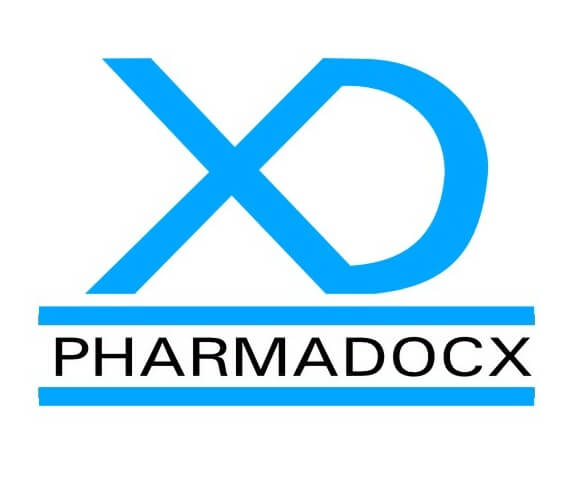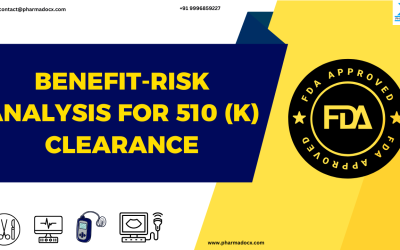Post-market surveillance (PMS) for software as a medical device (SaMD) is a critical regulatory and operational requirement. It ensures ongoing safety, performance, and compliance once the product is launched in the market. SaMDs are reshaping modern healthcare. They are being used as clinical decision support systems. Hence, they have to be monitored and regulated for patient safety. Post-market surveillance is a continuous process to ensure patient safety and maintain device performance. In this blog, we have discussed the best practices for post-market surveillance for SaMD.
What is post-market surveillance for SaMD?
Post-market surveillance for SaMD is a systematic process of monitoring the safety, performance, and clinical effectiveness of the software after it has been released in the market. It involves collecting and analyzing real-world data, such as user feedback, adverse event reports, software logs, and usage patterns. Post-market surveillance is necessary to detect emerging risks, ensure continued compliance with regulatory requirements, and support ongoing improvements. Notably, post-market surveillance for SaMD is especially critical due to the dynamic nature of software updates, cybersecurity vulnerabilities, and algorithmic behaviour. Hence, it is mandated by global regulators, such as the FDA, EU MDR, CDSCO, and Health Canada.
Need for post-market surveillance for SaMD
Post-market surveillance is essential for SaMD because it ensures the software continues to perform safely and effectively in real-world conditions. Unlike traditional devices, SaMD can evolve rapidly through updates, interact with diverse user environments, and be vulnerable to cybersecurity threats. PMS enables manufacturers to detect and address emerging risks, validate clinical performance, and comply with global regulatory requirements. It also supports continuous improvement by feeding real-world data into risk management, CAPA, and software maintenance processes.
- Ensures patient safety: Post-market surveillance can detect software bugs, algorithmic errors, and cybersecurity threats that could harm users.
- Validates real-world performance: Post-market surveillance for SaMD confirms that the SaMD continues to deliver clinically meaningful results outside controlled environments.
- Supports regulatory compliance: Post-market surveillance is a necessary requirement for authorities like FDA, EU MDR, Health Canada, and CDSCO.
- Continuous improvement: Provides data for refining risk assessments, CAPA, and software updates.
- Monitors algorithm drift: Tracks changes in AI/ML behavior over time to prevent degraded accuracy or bias.
- Strengthens cybersecurity vigilance: Post-market surveillance identifies vulnerabilities and supports timely mitigation of risks.
- Enables global market access: Sustained PMS is often a prerequisite for maintaining certifications and registrations across regions.
- Builds stakeholder trust: Demonstrates commitment to safety, transparency, and quality to clinicians, patients, and regulators.
What are the key PMS activities for SaMD?
- Data collection: Customer feedback, complaints, usage statistics, clinical data, and software logs have to be collected.
- Trend analysis: Emerging risks or performance degradation over time has to be identified.
- Vigilance reporting: Mandatory reporting of adverse events to regulators (e.g., FDA’s MAUDE, EU’s EUDAMED)
- Software maintenance monitoring: Track updates, patches, and bug fixes.
- Risk reassessment: Updates risk files and hazard analyses based on field data
Key post-market surveillance requirements
We have presented the key requirements for post-market surveillance for SaMD.
- PMS plan: A documented strategy outlining how safety, performance, and usability will be monitored post-launch will be required. Some regulatory authorities will require a well-structured PMS plan.
- Data collection and analysis: Systematic collation of real-world data namely, user feedback, complaints, adverse events, usage logs, and clinical outcomes, has to be done to detect trends and emerging risks.
- Vigilance reporting: Mandatory reporting of serious incidents and field safety corrective actions to regulatory authorities (e.g., FDA MAUDE, EU EUDAMED, Health Canada).
- Risk management updates: Continuous reassessment of risk files and hazard analyses based on post-market data.
- Post-market clinical follow-up (PMCF): For higher-risk SaMD under EU MDR, PMCF is required to confirm ongoing clinical safety and performance in real-world settings.
- Cybersecurity monitoring: Surveillance of vulnerabilities, patch effectiveness, and threat mitigation aligned with FDA’s premarket and post-market cybersecurity guidance has to be performed.
- Software maintenance documentation: Updates, bug fixes, and version control per IEC 62304 clauses 6.1 and 9 has to be tracked, with impact assessments on safety and performance.
- Periodic summary reports: Submission of PMS reports (EU MDR), periodic safety update reports (PSURs for Class IIa and above), and annual reports (FDA for certain devices) will be required.
- Region-specific compliance: Post market surveillance activities have to be tailored to meet jurisdictional requirements of FDA 21 CFR Part 820, EU MDR, Health Canada MDSAP, and CDSCO Medical Device Rules, as applicable.
10 Best practices for effective post-market surveillance for SaMD
We have presented some best practices for an effective post-market surveillance for SaMD.
- Establish a risk-based PMS plan: Tailor surveillance activities to the device’s risk class, intended use, and patient impact. Align with ISO 14971 and IEC 62304 for software lifecycle and risk management.
- Integrate PMS into the QMS: Embed PMS procedures within your ISO 13485-compliant quality management system to ensure traceability, accountability, and audit readiness.
- Automate real-world data collection: Use analytics tools to monitor usage patterns, error logs, and clinical outcomes. Leverage APIs and cloud platforms for scalable data capture.
- Perform trend analysis and signal detection: Regularly analyze feedback, complaints, and performance data to identify emerging risks or degradation in software behavior.
- Monitor cybersecurity and software updates: Track vulnerabilities, patch deployments, and update effectiveness. Document changes per IEC 62304 maintenance requirements.
- Conduct post-market clinical follow-up (PMCF): For higher-risk SaMD (especially under EU MDR), collect clinical evidence to confirm ongoing safety and performance.
- Report vigilance events promptly: Ensure timely reporting of adverse events to regulatory bodies like FDA (MAUDE), EU (EUDAMED), and Health Canada.
- Maintain a live risk file: Continuously update risk assessments and hazard analyses based on field data, CAPA inputs, and software changes.
- Foster cross-functional collaboration: Involve regulatory, clinical, software, and support teams in PMS activities to ensure holistic oversight and rapid response.
- Harmonize global compliance: Customize PMS documentation and reporting to meet regional requirements.
Common challenges faced
We have presented some of the common challenges faced while performing post market surveillance for SaMD.
- Incomplete or unstructured real-world data: SaMD often relies on user-generated data, which can be inconsistent, fragmented, or lacking clinical context.
- Rapid software updates: Frequent changes in code, algorithms, or user interfaces complicate traceability and impact assessments.
- Algorithm drift and AI transparency: For AI/ML-based SaMD, performance may degrade over time due to changing input data, and lack of explainability hinders risk evaluation.
- Cybersecurity vulnerabilities: Ongoing threats require continuous monitoring and patching. However, many PMS systems lack robust cybersecurity surveillance.
- Regulatory differences: Differing PMS expectations across FDA, EU MDR, Health Canada, and CDSCO create complexity in harmonizing global compliance.
- Underreporting of adverse events: Users may not recognize or report software-related incidents, leading to gaps in vigilance data.
- Integration with QMS and risk management: PMS data is often siloed and not effectively fed into CAPA, risk files, or design controls.
- Documentation burden: Generating periodic safety update reports (PSURs), vigilance reports, and PMCF documentation can strain resources, especially for startups or SMEs
Pharmadocx Consultants: Your trusted SaMD consultant
We understand that SaMD has unique post market surveillance requirements. Hence, we provide tailored solutions that address the unique challenges of SaMD, thereby ensuring faster approvals and sustained market access. Our team will assist you with post market surveillance planning and preparation per regulatory requirements. For guidance in achieving a smooth and regulatory-compliant post-market surveillance for SaMD, email at [email protected] or call/Whatsapp on 9996859227.





